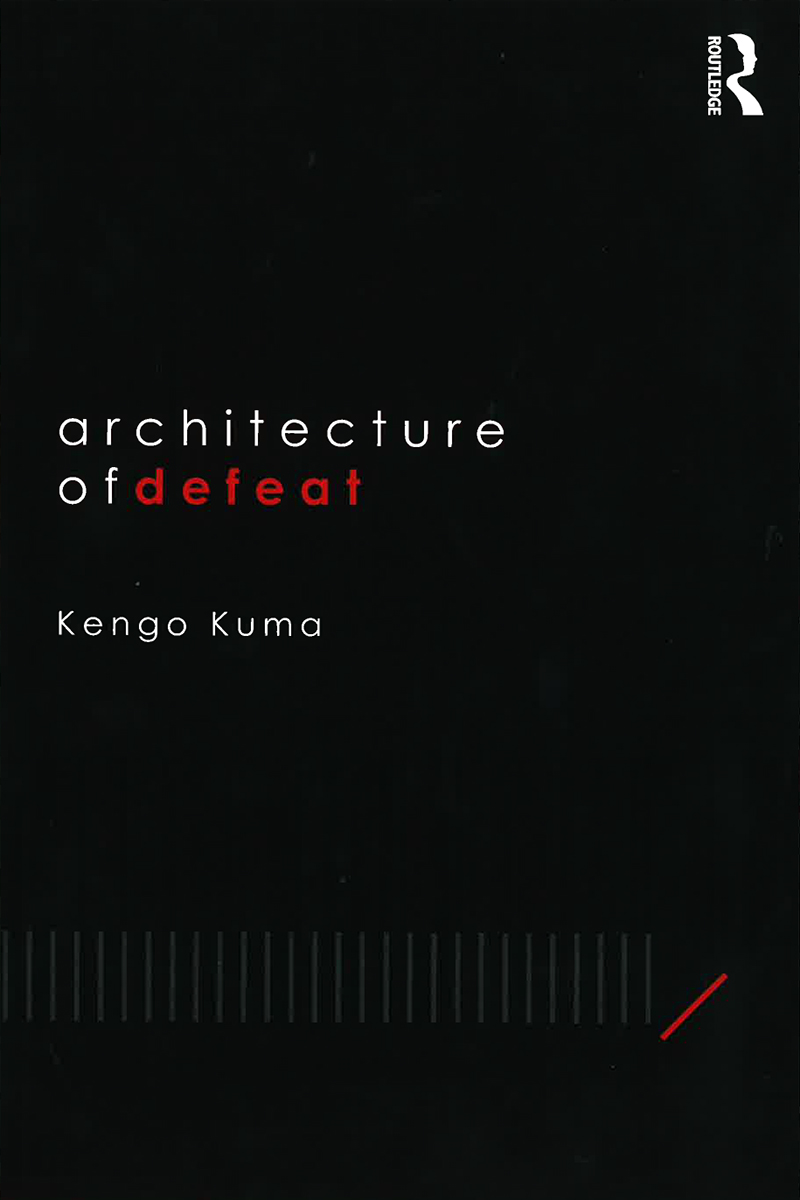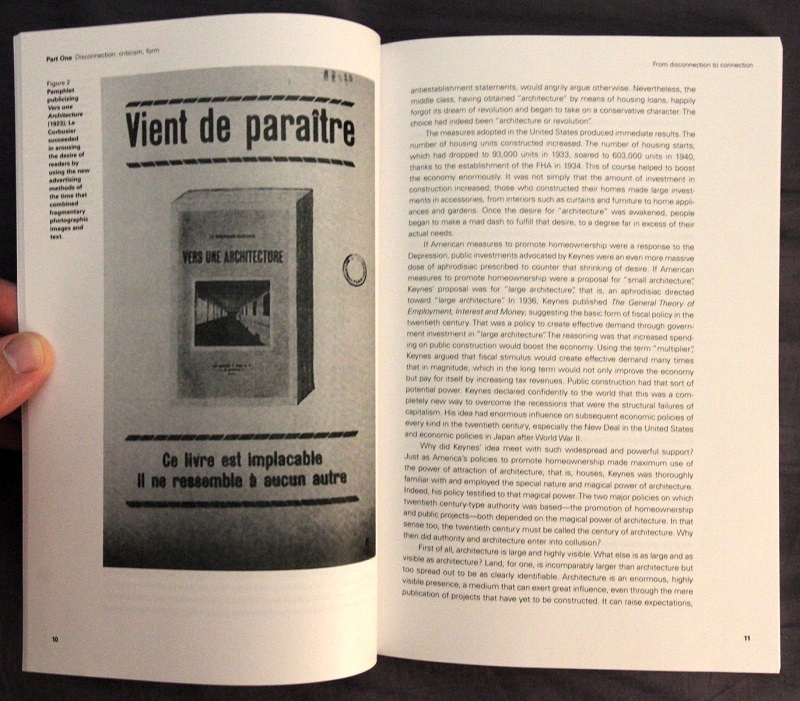Architecture of Defeat
Architecture of Defeat
Kengo Kuma
Routledge, June 2019

Paperback | 6 x 9 inches | 176 pages | 76 illustrations | English (translated by Hiroshi Watanabe) | ISBN: 978-1138390843 | $39.95
Publisher's Description:



Author Bio:
(Note: Books bought via these links send a few cents to this blog, keeping it afloat.)




Kengo Kuma
Routledge, June 2019

Paperback | 6 x 9 inches | 176 pages | 76 illustrations | English (translated by Hiroshi Watanabe) | ISBN: 978-1138390843 | $39.95
Publisher's Description:
Kengo Kuma, one of Japan’s leading architects, has been combining professional practice and academia for most of his career. In addition to creating many internationally recognized buildings all over the world, he has written extensively about the history and theory of architecture. Like his built work, his writings also reflect his profound personal philosophy.dDAB Commentary:
Architecture of Defeat is no exception. Now available in English for the first time, the book explores events and architectural trends in the twentieth and twenty-first centuries in both Japan and beyond. It brings together a collection of essays which Kuma wrote after disasters such as the destruction of the World Trade Center in New York City on 9/11 and the earthquake and tsunami that obliterated much of the built landscape on Japan’s northern shore in a matter of minutes in 2011. Asking if we have been building in a manner that is too self-confident or arrogant, he examines architecture’s intrinsic—and often problematic—relationship to the powerful forces of contemporary politics, economics, consumerism, and technology, as well as its vital ties to society.
Despite the title, Architecture of Defeat is an optimistic and hopeful book. Rather than anticipating the demise of architecture, Kuma envisages a different mode of conceiving architecture: guided and shaped by more modesty and with greater respect for the forces of our natural world.
Although I've reviewed a few monographs on Kengo Kuma, each one was written by or with another author, meaning I've read very little by Kuma himself. With this deficiency I was looking forward to Architecture of Defeat, a collection of essays written between 1995 and sometime around 2002, when it was published in Japanese. Yes, it took seventeen years to translate the book into English and release it, but the articles still hold relevancy, in part because Kuma tends to write about architects and buildings in the past or about contemporary architecture and life in a way that is fresh and forward-thinking. The essays in the former camp see Kuma donning the hat of a critic, such as when he dissects an oft overlooked building in Tokyo, Nikken Sekkei's San'ai Dream Center in Ginza. He is a fan of the attempt made by the architects to create a powerful image on a tiny site, but, analyzing it through the lens of the Duck and the Decorated Shed as articulated in Learning from Las Vegas, he sees the building-as-billboard as a "sad sight." His words on Yoshichika Uchida's buildings are all complimentary though, especially when it comes to how the architect used precast concrete, for instance, instead of in situ concrete, which Kuma expresses his dislike for numerous times in Architecture of Defeat. Kuma's embrace of Uchida's modular materials finds a parallel in Kuma's own buildings such as the V&A Dundee and its many precast concrete planks.Spreads:
More than the essays on San'ai Dream Center, Uchida, and others in Part 2, "Transparency, democracy, materialism," I was most impressed with those in Parts 1 and 3: "Disconnection, criticism, form" and "Brands, virtuality, enclosure." Here Kuma treads into territory that gives the book its "defeat" moniker, though unlike both the author and the publisher asserting that it is "an optimistic and hopeful book," I see it more as a course correction. Take the first essay in the book, "From disconnection to connection," in which Kuma looks at two strands of 20th century economics -- policies promoting homeownership and Keynesian spending on large public projects -- and how architecture was complicit with a widespread modernization that resulted in architecture being "the enemy of society." Seeing an "era of disconnection" resulting from this process, he argues for "architecture as a matter of connections," though what form that would take is limited to discussion of natural materials over concrete. Near the end of the book, Kuma argues for buildings to be judged on other criteria besides beauty, given that photographs now and then (and much earlier, as an example by Le Corbusier attests) can be manipulated in various ways to make them look most appealing. This beyond-beauty course correction clearly has not taken hold yet, but with Kuma's words now in English the chances of them having an impact is much greater.



Author Bio:
Kengo Kuma is one of the world’s leading architects. He established his architecture firm Kengo Kuma and Associates in 1990 and is a Professor at the Graduate School of Architecture at the University of Tokyo, Japan.Purchase Links:
(Note: Books bought via these links send a few cents to this blog, keeping it afloat.)



